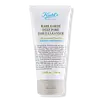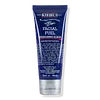What's inside
What's inside
 Key Ingredients
Key Ingredients

 Benefits
Benefits

 Concerns
Concerns

 Ingredients Side-by-side
Ingredients Side-by-side

Water
Skin ConditioningKaolin
AbrasiveGlycerin
HumectantAlcohol Denat.
AntimicrobialSodium Cocoyl Glycinate
CleansingCoco-Betaine
CleansingAcrylates Copolymer
Sodium Chloride
MaskingCI 77891
Cosmetic ColorantSolum Diatomeae
AbrasivePhenoxyethanol
PreservativePEG-14m
Emulsion StabilisingGlycol Distearate
EmollientSodium Benzoate
MaskingAloe Barbadensis Leaf Juice
Skin ConditioningSalicylic Acid
MaskingAvena Sativa Kernel Flour
AbrasiveTocopherol
AntioxidantSodium Hydroxide
BufferingAllantoin
Skin ConditioningWater, Kaolin, Glycerin, Alcohol Denat., Sodium Cocoyl Glycinate, Coco-Betaine, Acrylates Copolymer, Sodium Chloride, CI 77891, Solum Diatomeae, Phenoxyethanol, PEG-14m, Glycol Distearate, Sodium Benzoate, Aloe Barbadensis Leaf Juice, Salicylic Acid, Avena Sativa Kernel Flour, Tocopherol, Sodium Hydroxide, Allantoin
Water
Skin ConditioningMyristic Acid
CleansingPalmitic Acid
EmollientPerlite
AbsorbentPotassium Hydroxide
BufferingLauric Acid
CleansingStearic Acid
CleansingPEG-7 Glyceryl Cocoate
EmulsifyingPrunus Armeniaca Seed Powder
AbrasiveDisodium Cocoyl Glutamate
CleansingGlycerin
HumectantSodium Lauroyl Glutamate
Phenoxyethanol
PreservativeCeteareth-60 Myristyl Glycol
EmulsifyingSodium Hydroxide
BufferingArgilla
AbrasiveCitric Acid
BufferingSodium Cocoyl Glutamate
CleansingCaprylyl Glycol
EmollientPentaerythrityl Tetra-Di-T-Butyl Hydroxyhydrocinnamate
AntioxidantDisodium EDTA
Parfum
MaskingMenthol
MaskingCaffeine
Skin ConditioningLimonene
PerfumingGlycine Soja Oil
EmollientTocopherol
AntioxidantCastanea Sativa Seed Extract
Skin ConditioningPentylene Glycol
Skin ConditioningHydrolyzed Soy Protein
HumectantCitrus Aurantium Dulcis Juice
Skin ConditioningCitrus Limon Juice
Skin ConditioningSodium Benzoate
MaskingPotassium Sorbate
PreservativeEthylhexylglycerin
Skin ConditioningWater, Myristic Acid, Palmitic Acid, Perlite, Potassium Hydroxide, Lauric Acid, Stearic Acid, PEG-7 Glyceryl Cocoate, Prunus Armeniaca Seed Powder, Disodium Cocoyl Glutamate, Glycerin, Sodium Lauroyl Glutamate, Phenoxyethanol, Ceteareth-60 Myristyl Glycol, Sodium Hydroxide, Argilla, Citric Acid, Sodium Cocoyl Glutamate, Caprylyl Glycol, Pentaerythrityl Tetra-Di-T-Butyl Hydroxyhydrocinnamate, Disodium EDTA, Parfum, Menthol, Caffeine, Limonene, Glycine Soja Oil, Tocopherol, Castanea Sativa Seed Extract, Pentylene Glycol, Hydrolyzed Soy Protein, Citrus Aurantium Dulcis Juice, Citrus Limon Juice, Sodium Benzoate, Potassium Sorbate, Ethylhexylglycerin
 Reviews
Reviews

Ingredients Explained
These ingredients are found in both products.
Ingredients higher up in an ingredient list are typically present in a larger amount.
Glycerin is already naturally found in your skin. It helps moisturize and protect your skin.
A study from 2016 found glycerin to be more effective as a humectant than AHAs and hyaluronic acid.
As a humectant, it helps the skin stay hydrated by pulling moisture to your skin. The low molecular weight of glycerin allows it to pull moisture into the deeper layers of your skin.
Hydrated skin improves your skin barrier; Your skin barrier helps protect against irritants and bacteria.
Glycerin has also been found to have antimicrobial and antiviral properties. Due to these properties, glycerin is often used in wound and burn treatments.
In cosmetics, glycerin is usually derived from plants such as soybean or palm. However, it can also be sourced from animals, such as tallow or animal fat.
This ingredient is organic, colorless, odorless, and non-toxic.
Glycerin is the name for this ingredient in American English. British English uses Glycerol/Glycerine.
Learn more about GlycerinPhenoxyethanol is a preservative that has germicide, antimicrobial, and aromatic properties. Studies show that phenoxyethanol can prevent microbial growth. By itself, it has a scent that is similar to that of a rose.
It's often used in formulations along with Caprylyl Glycol to preserve the shelf life of products.
Sodium Benzoate is a preservative. It's used in both cosmetic and food products to inhibit the growth of mold and bacteria. It is typically produced synthetically.
Both the US FDA and EU Health Committee have approved the use of sodium benzoate. In the US, levels of 0.1% (of the total product) are allowed.
Sodium benzoate works as a preservative by inhibiting the growth of bacteria inside of cells. It prevents the cell from fermenting a type of sugar using an enzyme called phosphofructokinase.
It is the salt of benzoic acid. Foods containing sodium benzoate include soda, salad dressings, condiments, fruit juices, wines, and snack foods.
Studies for using ascorbic acid and sodium benzoate in cosmetics are lacking, especially in skincare routines with multiple steps.
We always recommend speaking with a professional, such as a dermatologist, if you have any concerns.
Learn more about Sodium BenzoateSodium Hydroxide is also known as lye or caustic soda. It is used to adjust the pH of products; many ingredients require a specific pH to be effective.
In small amounts, sodium hydroxide is considered safe to use. However, large amounts may cause chemical burns due to its high alkaline.
Your skin has a natural pH and acid mantle. This acid mantle helps prevent harmful bacteria from breaking through. The acid mantle also helps keep your skin hydrated.
"Alkaline" refers to a high pH level. A low pH level would be considered acidic.
Learn more about Sodium HydroxideTocopherol (also known as Vitamin E) is a common antioxidant used to help protect the skin from free-radicals and strengthen the skin barrier. It's also fat soluble - this means our skin is great at absorbing it.
Vitamin E also helps keep your natural skin lipids healthy. Your lipid skin barrier naturally consists of lipids, ceramides, and fatty acids. Vitamin E offers extra protection for your skin’s lipid barrier, keeping your skin healthy and nourished.
Another benefit is a bit of UV protection. Vitamin E helps reduce the damage caused by UVB rays. (It should not replace your sunscreen). Combining it with Vitamin C can decrease sunburned cells and hyperpigmentation after UV exposure.
You might have noticed Vitamin E + C often paired together. This is because it is great at stabilizing Vitamin C. Using the two together helps increase the effectiveness of both ingredients.
There are often claims that Vitamin E can reduce/prevent scarring, but these claims haven't been confirmed by scientific research.
Learn more about TocopherolWater. It's the most common cosmetic ingredient of all. You'll usually see it at the top of ingredient lists, meaning that it makes up the largest part of the product.
So why is it so popular? Water most often acts as a solvent - this means that it helps dissolve other ingredients into the formulation.
You'll also recognize water as that liquid we all need to stay alive. If you see this, drink a glass of water. Stay hydrated!
Learn more about Water